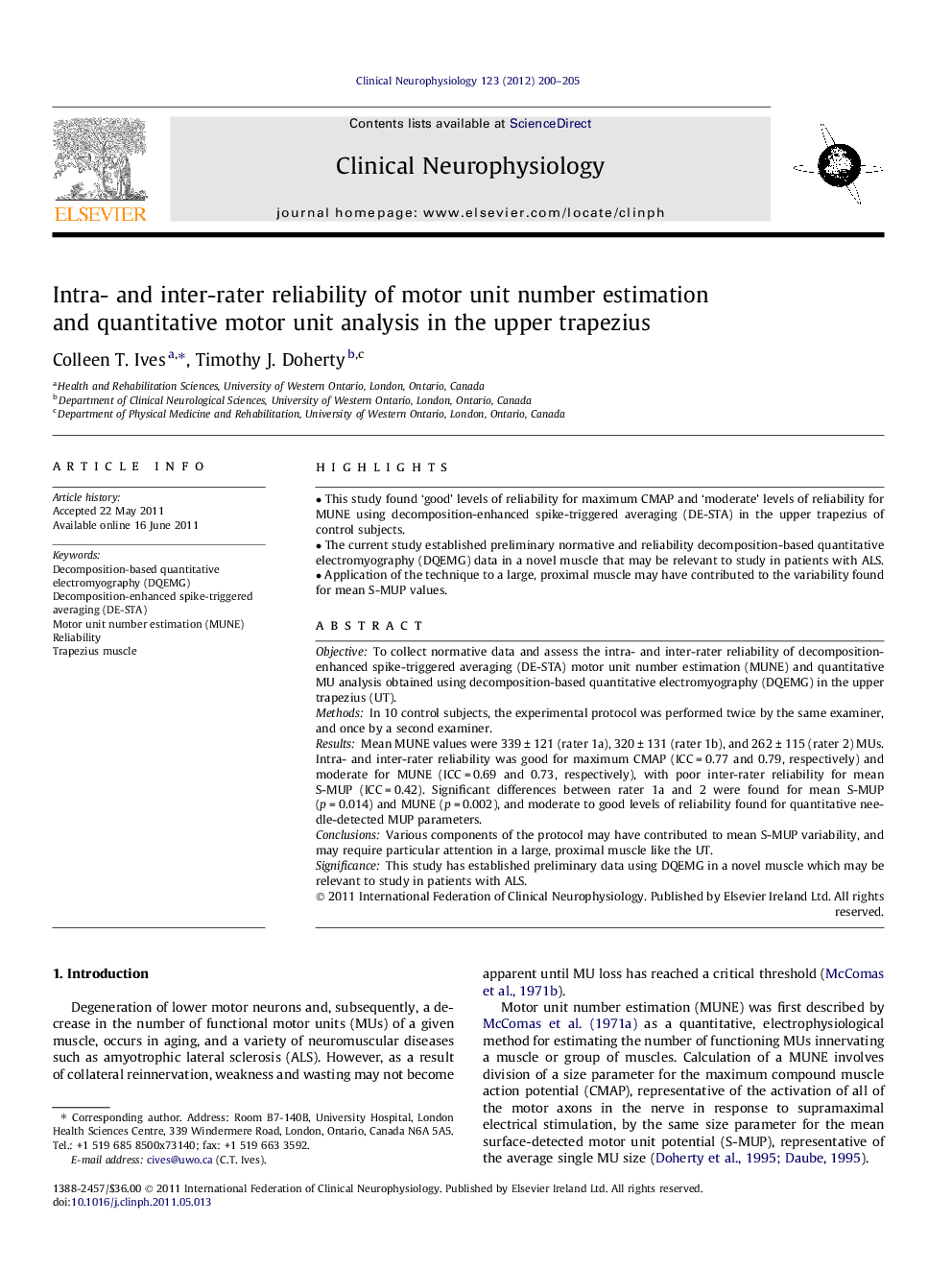| Article ID | Journal | Published Year | Pages | File Type |
|---|---|---|---|---|
| 3043848 | Clinical Neurophysiology | 2012 | 6 Pages |
ObjectiveTo collect normative data and assess the intra- and inter-rater reliability of decomposition-enhanced spike-triggered averaging (DE-STA) motor unit number estimation (MUNE) and quantitative MU analysis obtained using decomposition-based quantitative electromyography (DQEMG) in the upper trapezius (UT).MethodsIn 10 control subjects, the experimental protocol was performed twice by the same examiner, and once by a second examiner.ResultsMean MUNE values were 339 ± 121 (rater 1a), 320 ± 131 (rater 1b), and 262 ± 115 (rater 2) MUs. Intra- and inter-rater reliability was good for maximum CMAP (ICC = 0.77 and 0.79, respectively) and moderate for MUNE (ICC = 0.69 and 0.73, respectively), with poor inter-rater reliability for mean S-MUP (ICC = 0.42). Significant differences between rater 1a and 2 were found for mean S-MUP (p = 0.014) and MUNE (p = 0.002), and moderate to good levels of reliability found for quantitative needle-detected MUP parameters.ConclusionsVarious components of the protocol may have contributed to mean S-MUP variability, and may require particular attention in a large, proximal muscle like the UT.SignificanceThis study has established preliminary data using DQEMG in a novel muscle which may be relevant to study in patients with ALS.
► This study found ‘good’ levels of reliability for maximum CMAP and ‘moderate’ levels of reliability for MUNE using decomposition-enhanced spike-triggered averaging (DE-STA) in the upper trapezius of control subjects. ► The current study established preliminary normative and reliability decomposition-based quantitative electromyography (DQEMG) data in a novel muscle that may be relevant to study in patients with ALS. ► Application of the technique to a large, proximal muscle may have contributed to the variability found for mean S-MUP values.
